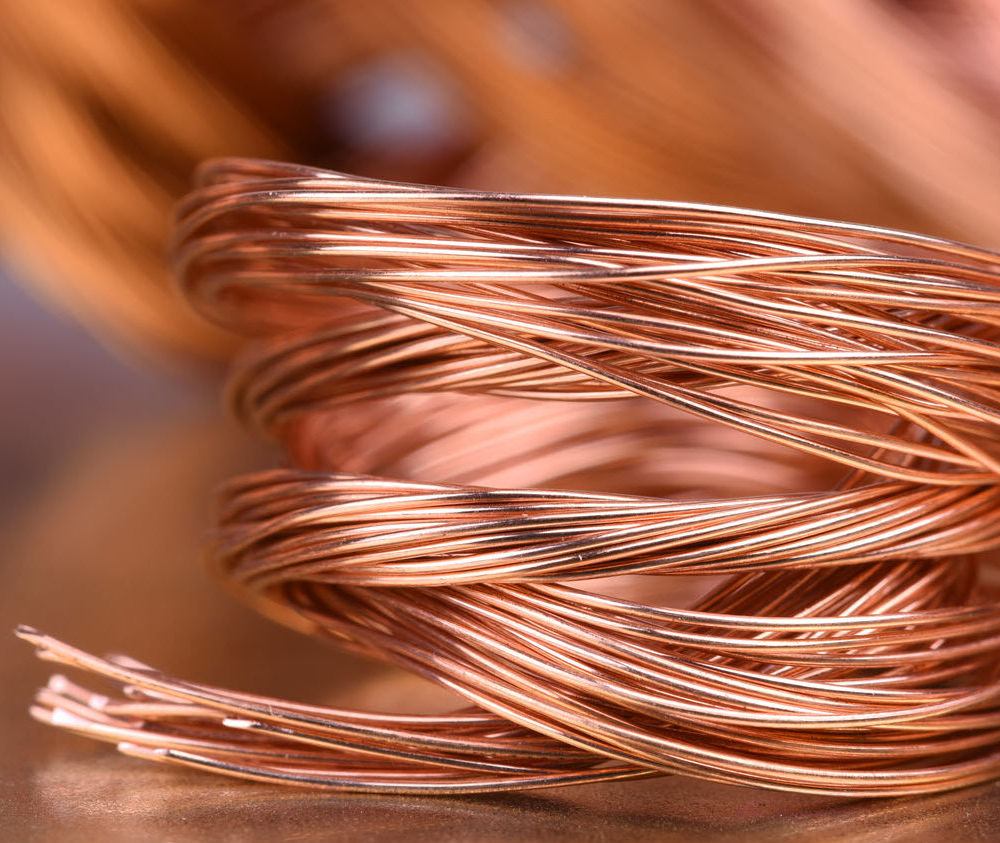Applications for Copper
Calculate the following based on your actual alloy chemistry:
Application Examples
Martensite Prediction in Nickel Aluminum Bronze Alloys
Many Nickel Aluminum Bronze (NAB) alloys undergo an allotropic phase transformation, which plays an important role in determining their properties. When cooled rapidly from high temperatures, a martensitic transformation can occur, which can be detrimental to mechanical properties and corrosion resistance. Thermo-Calc can calculate the T0 (T-Zero) temperature, which is a reasonable estimate of the martensite start temperature.
This figure shows the calculated T0 temperature as a function of Al content for a nominal composition of UNS C95520, Cu-10Al-5Fe-5Ni (wt%).

Precipitation Behavior of Cu-Ni-Si Alloys
Cu-Ni-Si alloys are precipitation strengthened and known for their high strength, high electrical conductivity, and excellent bending workability. Watanabe and Monzen experimentally determined precipitation behavior of the Cu-1.86 wt.% Ni-0.45 wt.% Si alloy at 923 and 948 K. Their measurements show that the precipitate (Ni2Si) is rod-shaped with an aspect ratio of 13.
This figure shows a simulation made using the Precipitation Module (TC-PRISMA) for these precipitates undergoing an isothermal heat treatment compared with the experimental data. Further simulations could be used to optimize the heat treatment schedule or determine the extent of precipitation given a thermal cycle imposed as a result of a process, for instance, welding or soldering.

Thermal Conductivity for an Additively Manufactured Cu-alloy
Cu-alloys have high thermal conductivities, making them lucrative for applications such as rocket engine combustion chamber liners. NASA developed an additively manufactured version of a Cu-alloy (GRCop-42) for such applications. With our Equilibrium with Freeze-in Temperature Model, users can calculate equilibrium at the freeze-in temperature and evaluate thermophysical properties at different temperatures. This model is particularly relevant for estimating properties such as thermal or electrical conductivities. The assumption in this model is that diffusion and phase transformations are negligible when changing from the freeze-in-temperature and, therefore, that the phase amounts and compositions of phases are kept at all other temperatures.
The figure shows the thermal conductivity (W/m.K) as a function of temperature (℃) for an additively manufactured Cu-alloy (GRCop-42). The values are compared against literature values [Chen2023] and show a good fit. This model was calculated using the TCCU6 database in Thermo-Calc.

Calculate Absorptivity as a Function of Wavelength of the Beam
When printing Cu-alloys via Powder Bed Fusion – Laser Beam, the main challenge is that the typical Yb-fiber lasers have a low absorptivity, thus making the printing difficult or even impossible. One solution is to print these materials with lower wavelength beam sources, such as with Blue lasers or Green lasers, which changes the interaction by increasing absorptivity of the laser beam.
The Additive Manufacturing Module in Thermo-Calc allows users to estimate absorptivity of a liquid metal surface as a function of electrical resistivity of the material and wavelength of the heat source used, using the Lorentz-Drude model. The example here shows the modelled absorptivity for a standard CuCr1Zr Cu-alloy with a Yb-fiber laser and Blue laser. As can be seen, the Blue laser has a higher absorptivity, making it more suitable for processing Cu-alloys.

Learn more about Applications to Cu-based Alloys
Mechanism investigation on high-performance Cu-Cr-Ti alloy via integrated computational materials engineering
Failure and fracture analysis of a high-alloy Ni-Al bronze chain connector of a tube drawing machine
Kinetic Simulations of Diffusion-Controlled Phase Transformations in Cu-Based Alloys



